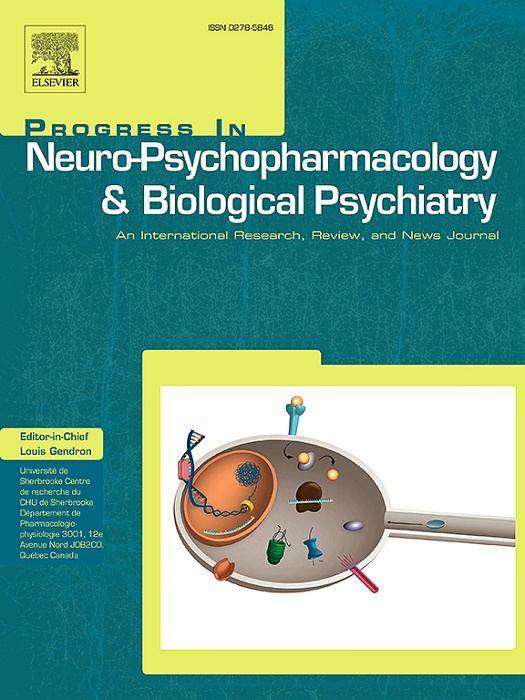Sex and age effects on prevalence of CYP2C19 and CYP2D6 Phenoconversion risk over time in patients with psychosis
IF 5.3
2区 医学
Q1 CLINICAL NEUROLOGY
Progress in Neuro-Psychopharmacology & Biological Psychiatry
Pub Date : 2025-04-02
DOI:10.1016/j.pnpbp.2025.111363
引用次数: 0
Abstract
Pharmacogenetics in psychiatry may have benefits for medication treatment success. However, medication regimes leading to drug-drug interactions and potential phenoconversion of actionable pharmacogenetic phenotypes challenge the application of pharmacogenetics. Although polypharmacy is common, its impact in patients with psychosis is understudied, even though these patients might benefit from pharmacogenetics-guided medication adjustment. Here, we investigated the impact of two pharmacogenes relevant in psychiatric practice, CYP2C19 and CYP2D6, and the effect of sex and age. Medication use and predicted occurrence of phenoconversion was examined in a sample of patients with psychosis over a period of approximately six years. Bayesian statistics were applied to examine longitudinal effects. Our results show that women used more medications, including CYP2C19 and CYP2D6 inhibitors and (actionable) substrates. No significant sex or age differences were found for phenoconversion of either enzyme. A sex-effect on CYP2C19 inhibitor use was found but appeared to be driven by weakly inhibiting oral contraceptives, which were reported only in women. The phenoconversion rate for both enzymes appeared to change over time, suggesting that phenoconversion is a dynamic state that may affect patients differently over their lifetime. To further improve treatment in this patient population, long-term and regular updated medication monitoring in (pharmacogenetic) research as well as application in practice are recommended.
性别和年龄对精神病患者随时间变化的 CYP2C19 和 CYP2D6 表观转换风险患病率的影响
精神病学的药物遗传学可能对药物治疗的成功有好处。然而,药物治疗方案导致药物-药物相互作用和可操作的药物遗传表型的潜在表型转化对药物遗传学的应用提出了挑战。虽然多药是常见的,但其对精神病患者的影响尚未得到充分研究,即使这些患者可能受益于药物遗传学指导的药物调整。本研究探讨了与精神病学实践相关的两种药物基因CYP2C19和CYP2D6的影响,以及性别和年龄的影响。在大约6年的精神病患者样本中检查了药物使用和预测表型转化的发生。采用贝叶斯统计方法检验纵向效应。我们的研究结果显示,女性使用更多的药物,包括CYP2C19和CYP2D6抑制剂和(可操作的)底物。两种酶的表型转化均未发现显著的性别或年龄差异。CYP2C19抑制剂的使用存在性别效应,但似乎是由口服避孕药的弱抑制作用驱动的,仅在女性中报道。两种酶的表型转化率似乎随着时间的推移而变化,这表明表型转化是一种动态状态,可能在患者的一生中对其产生不同的影响。为了进一步改善该患者群体的治疗,建议在(药理学)研究中进行长期和定期更新的药物监测以及在实践中的应用。
本文章由计算机程序翻译,如有差异,请以英文原文为准。
求助全文
约1分钟内获得全文
求助全文
来源期刊
CiteScore
12.00
自引率
1.80%
发文量
153
审稿时长
56 days
期刊介绍:
Progress in Neuro-Psychopharmacology & Biological Psychiatry is an international and multidisciplinary journal which aims to ensure the rapid publication of authoritative reviews and research papers dealing with experimental and clinical aspects of neuro-psychopharmacology and biological psychiatry. Issues of the journal are regularly devoted wholly in or in part to a topical subject.
Progress in Neuro-Psychopharmacology & Biological Psychiatry does not publish work on the actions of biological extracts unless the pharmacological active molecular substrate and/or specific receptor binding properties of the extract compounds are elucidated.

 求助内容:
求助内容: 应助结果提醒方式:
应助结果提醒方式:


